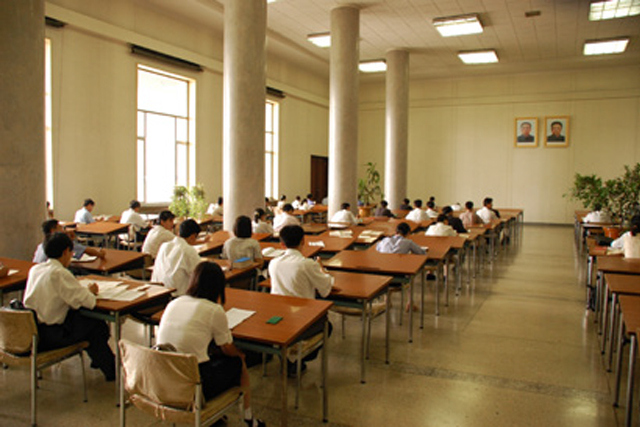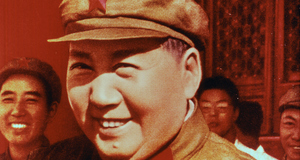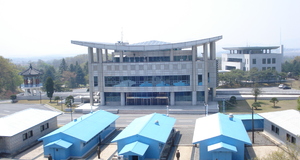From Cornell International Affairs Review VOL. 5 NO. 1Information Technology and Control in the DPRKIn the mobile phones sector, the scenario is much the same. South Korean unification minister Um Jong-Sik cited in 2010 that the North currently had an estimated 450,000 cell phone users.17 As documented above, these phones are limited to use within the country and can only access the domestic intranet. However, their popularity and the industry’s rapid growth (the number of Korean cell phone users rose 50% from 2009-2010)18 demonstrate that, again, there is a definite demand for, and growing familiarity with, these communications products. Importantly, it is this familiarity that holds daunting possibilities for the regime’s future security. These technologies were originally allowed because they were restricted to DPRK-only use, with no possibility for connection to the opposite world. These restrictions work – there is no way to reconfigure a Koryolink phone to dial internationally or to connect to the Internet from within Kwang Myong. But because these products are simulacra of products popular in the outside world, their operation is almost identical. If someone familiar with the workings of a Red Star computer were granted access to, say, a Chinese or South Korean computer, he would be familiar enough with the technology that he could work it. By the same token, anyone with mobile phone know-how honed by practice with domestic products would also be quite prepared to use foreign phones with unrestricted capabilities. With 450,000 cell phone users in the country at the time of writing, this familiarity would be hard to stamp out even if the regime changed its mind. As use expands, it is experience with these products and not their Juche manifestations that marks IT’s biggest threat to the Korean regime. These risks have already been realized in several cases. Most prominently, North Korean informers have recently come to use their domestic phone knowledge to send information via Chinese cell phones, which have no Jucheinspired restrictions. Smuggled at great risk through the North Korea-China border, the phones operate on prepaid SIM cards capable of calling and texting defectors working to collect information from China. When used near the Chinese border, these phones are even said to be able to receive Chinese internet signals.19 Information from the users of these cell phones has been revealing and important. According to one New York Times article, news from these informants constituted the first information about North Korean outrage over the currency reevaluation enacted in 2009.20 Before cell phones, there were indeed defectors who came to China or the South bearing important information about happenings in the DPRK. But the two-way properties of the internet, with informers in the country reporting to defectors on the outside, is a truly revolutionary development. In previous cases, defectors could only provide what information they could bring with them when they exited the country, and returning as a spy was almost completely out of the question. Now, however, thanks to this technology, these networks have constant updates from within the country, which can continue indefinitely. It is estimated that as many as 1,000 of these smuggled phones are currently in use within the DPRK.21 The reports come from individuals not likely to have any special knowledge about or access to North Korea’s gravest threats to the outside, such as its nuclear program or the question of Kim Jong-Il’s successor, but the mere presence of reports from within the country is a major change from only a few years prior. The regime is aware of these threats. Smuggling across the Chinese border has been a problem before the rise of cell phones, but this new commodity has prompted speculation and the implementation of policies that appear anticipate a crackdown. In the wake of the recent revolutions in Egypt and Tunisia, in which cell phones and internet technology played an unquestionably vital role, North Korea’s leaders were visibly concerned. Just after the revolutions broke out, Pyongyang required both institutions and households to report on how many tech devices they owned. This drive included computers and cell phones but extended even to USB flash drives and MP3 players.22 This measure indicates a great deal about North Korea’s own technological selfawareness. First of all, it is certain that such devices exist outside the highest levels of government. The inclusion of flash drives and MP3 players indicates a consumer sophistication beyond that of most analyses, which, as noted above, hold to the outdated idea that technology has almost no footing in modern North Korean society. Though it is foolish to assume that anyone outside the Pyongyang and Nanpo wealthy has access to an MP3 player, it is interesting that anyone at all should have access to these devices. Are they a gift of the beneficent and omnipotent Worker’s Party, or the first black market trickles of a powerful economic sector into an economically isolated society? Even more importantly, this recent measure to register technology is a huge departure from policies of just seven years ago. In 2004, the government’s response to a bomb blast along train tracks that missed Kim Jong-Il was much more extreme. A cell phone was found among the rubble, and the regime promptly banned all cell phones within the country’s borders, including those carried in by diplomats.23 It is speculated that the regime suspected the bombers of using cell phones to coordinate or even detonate the blast. This reaction reveals a fundamental shift in policy in recent years motivated by a deepening integration of these technologies into North Korean society. This technology has taken a substantial hold in North Korean consumer markets – to the point that the regime cannot easily change its mind and go backwards. In fact, given growth rates for the past years, it is safe to assume that North Korean consumers will expect increasingly attainable telecommunications products. If the state does not cooperate with these demands, it has been shown that determined citizens will turn to the black market despite harsh penalties, and these products from China do represent a substantial danger to the regime’s information control. The two-way properties of the internet, with informers in the country reporting to defectors on the outside, is a truly revolutionary development. Future analyses of the domestic situation in North Korea must embrace and investigate further the notion that North Korea is no longer a total information blackout: there are pinpoints of access, even if they are guarded and small. No longer will it be accurate to depict the DPRK as having no interest in connecting with the outside world. For governments and organizations working from the outside to improve human rights in North Korea and defuse a possibly explosive collapse of the regime, these connections should be monitored closely. Policy-wise, these organizations should continue existing campaigns to provide information to North Korea’s citizens, but the beginnings of internet access in North Korea offer a key opportunity for change: existing methods of floating in AM radios or brochures into the country have proved to be the most effective way to get these resources into the reclusive country, but they have also proved to be dangerous. If average citizens come upon these parcels or leaflets by chance, they are automatically placed in grave danger of being caught with the devices, or even of being punished for simply having seen them. These offenses have repeatedly proved punishable by transport to a labor camp or death. The recent appearance of North Korean IP flags on international news sites shows that there are individuals in North Korea looking for information on the outside. Concentrating on novel ways to target information to these individuals, who are already looking for it though conscious of the danger, is perhaps a safer and more advantageous strategy made possible by this technology. In other spheres, governments should find new and meaningful ways to support projects for continued IT development in the DPRK. The Hermit Kingdom has showed it is at least interested in progress in this sector, and IT development has been a key method of new and constructive discourse. The most prominent example is the recent opening of the Pyongyang University of Science and Technology. The project was spearheaded by a Christian group, but the US State Department was deeply involved in funding and overseeing the program’s development, including oversight of individual class syllabi. Any projects like this, that increase North Korean exposure to information from the outside, should be viewed as key opportunities for discourse. PUST’s prominent advantage is that it grants the internet as an educational tool to 160 of North Korea’s brightest students. Through one investment, the outside world now has 160 possible contacts – not in fields of intelligence or espionage, but in the fields of outside knowledge, perhaps even included lightly censored current events. That is a high return for any single investment. In conclusion, both investors and governments should insist to the regime that increases in communicative potential are a valuable resource, regardless of their use. These sales pitches can easily be accompanied by small policy carrots that convince the regime that it stands to profit from wider access to world communication. The fruits of these connections will likely come naturally once they are established, so the current focus should be on establishing new connections, rather than on manipulating existing ones. Given its many anomalies (students and faculty from multiple nations, full web access), it is possible that these strategies are already beginning to be effective at PUST. The university doesn’t fit clearly into the Juche facsimile structure observed primarily between 2000 and 2010, with the university’s openings. With the freedoms it delivers, and the international partnerships central to its existence, the university is no facsimile. Kim Jong Il has proved nothing if not mercurial, but at the moment, the university represents a genuine academic foothold in the ascent to widened DPRK web access. With no degrees awarded yet, the university has not had any tangible effects, either with respect to economic or civil advancement. Its opening, however, realized in October 2010 after seven years of delay, shows that the DPRK may be edging into a new approach to IT and out of a Juche-based system in use for the past decade whose contours are only just beginning to become clear. Endnotes
Photos courtesy of:
Suggested Reading from Inquiries Journal
Inquiries Journal provides undergraduate and graduate students around the world a platform for the wide dissemination of academic work over a range of core disciplines. Representing the work of students from hundreds of institutions around the globe, Inquiries Journal's large database of academic articles is completely free. Learn more | Blog | Submit Latest in International Affairs |


















